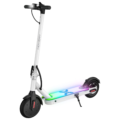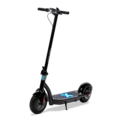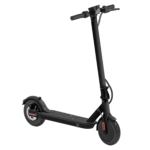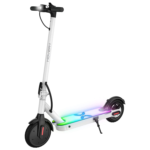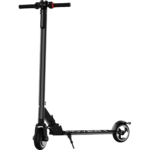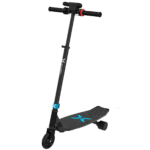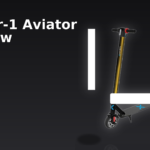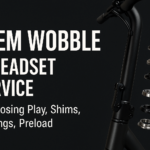- Home
- Scooters
- Electric Scooters
- Hover-1 Night Owl
Hover-1 Night Owl
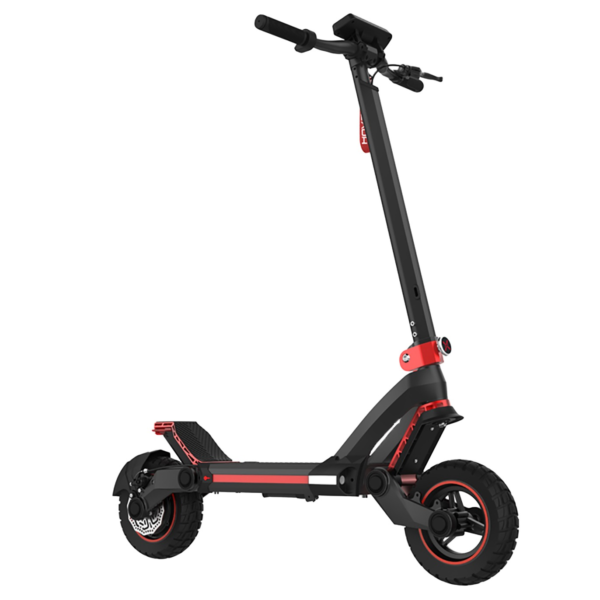

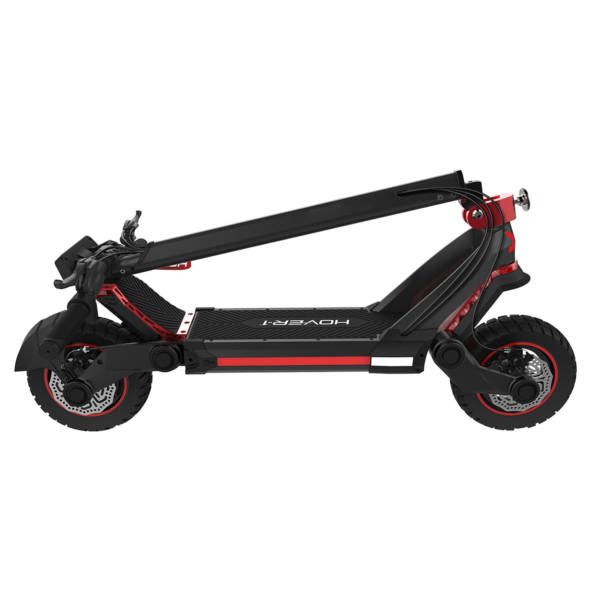

- Battery Range: 37 miles (60 km)
- Top Speed: 31 mph (50 km/h)
- Motor Power: 1200 W
- Weight Capacity: 220 lb (100 kg)
- Charging Time: Not specified
- Scooter Weight: 57.3 lb (26.0 kg)
PROS
- 1200W motor (1,400W peak)
- Up to 31 mph off-road / 20 mph street
- Up to 37-mile range
- Dual disc brakes
- 10.5″ off-road pneumatic tires
- Front & rear suspension
CONS
- Heavy at ~57 lb
- No stated IP rating
- App features not specified
Table of contents
- What Is the Hover-1 Night Owl?
- How the Hover-1 Night Owl Works
- Key Specifications
- Design & Build Quality
- Performance Fundamentals
- Battery, Range & Efficiency
- Ride Quality & Comfort
- Braking & Safety Features
- Portability & Daily Usability
- Maintenance & Care
- Weather & Seasonal Considerations
- Hover-1 Night Owl vs Alternatives
- Who the Hover-1 Night Owl Is (and Isn’t) For
- FAQs
- Glossary
- Final Notes on Getting the Most from Your Night Owl
If you want a fast, tough, app-enabled electric scooter you can ride on mixed city streets and light trails, the Hover-1 Night Owl sits right in that sweet spot. Moreover, it blends a 52-volt battery, big 10.5-inch pneumatic tires, dual disc brakes, and front/rear suspension into a package that feels stable at speed yet manageable day to day. Consequently, this overview explains how it works, who it suits, and how to get the most out of it—using the official specs as your baseline.
What Is the Hover-1 Night Owl?
The Hover-1 Night Owl is a full-size, foldable e-scooter designed for riders who want more pace and comfort than entry-level commuters. It runs a 1200-watt brushless motor with a maximum speed of up to 31 mph (50 km/h) in Off-Road mode and up to 20 mph (32 km/h) in Street mode. Additionally, a 52V/18Ah lithium-ion battery delivers up to 37 miles (60 km) of claimed range. You also get 10.5″ semi–off-road pneumatic tires, dual disc brakes with electronic e-brake, robust front and rear suspension, a large LCD display, and built-in cruise control.
As a result, it’s hefty enough to inspire confidence, yet it still folds for car trunks or apartment storage. Riders who prioritize stability, braking, and predictable handling—along with a touch of off-road capability—will feel right at home. Nevertheless, those who must carry a scooter up several flights daily may prefer a lighter platform.
How the Hover-1 Night Owl Works
Think of the Night Owl as a simple, silent powertrain managed by a small computer. In brief, you provide input with your thumb; the controller meters current; the motor turns watts into motion; and the brakes convert speed back into heat and a bit of electronic deceleration.
- Motor
A 1200W brushless hub motor sits in the wheel. Because brushless motors have no rubbing brushes, they waste less energy as heat and deliver smooth pull from a standstill. Furthermore, in Off-Road mode the controller allows a higher top speed; in Street mode, it caps it. - Controller
The controller is the scooter’s brain. It blends throttle input, limits current to protect the battery, and adds electronic braking assist when you pull the levers. Likewise, it governs speed modes and cruise control, all visible on the dash. - Battery
A 52-volt, 18-amp-hour lithium-ion pack lives in the deck. Voltage is the “pressure” that pushes current to the motor; capacity (Ah) is the “tank size.” Multiply them and you get roughly 936 Wh, which is a practical way to compare real-world range potential. Importantly, higher Wh often means fewer charging sessions per week. - Throttle
A right-hand thumb throttle feeds the controller your speed request. Because it’s analog and progressive, you can meter acceleration in traffic or dial it up on open stretches. In addition, the layout keeps your wrist neutral, which reduces fatigue on long rides. - Brakes
The Night Owl pairs dual cable-actuated disc brakes with an electronic e-brake. Squeeze the levers and the rotors clamp; at the same time, motor assistance tapers and the controller adds electronic braking for a stronger, more controlled stop. Consequently, stopping distances feel consistent across a range of speeds.
Put simply, electricity flows from the battery to the motor while the controller orchestrates the exchange. Then, when you want to slow, mechanical and electronic systems cooperate to scrub speed safely.
Key Specifications
Below are the official specifications organized in a format that’s easy to scan. Values are shown in both imperial and metric where relevant.
General
| Item | Spec |
|---|---|
| Model | H1-NTL (Night Owl) |
| Minimum Rider Weight | 40 lb (18 kg) |
| Maximum Rider Weight | 220 lb (100 kg) |
| Recommended Rider Age | 16+ years |
Performance & Power
| Item | Spec |
|---|---|
| Motor Type / Power | Brushless hub, 1200 W (rated) |
| Top Speed (Street / Off-Road) | 20 mph (32 km/h) / 31 mph (50 km/h) |
| Claimed Max Range | Up to 37 miles (60 km) |
| Speed Modes | Street (ROAD) / Off-Road (OFRD) |
| Cruise Control | Yes (dash-controlled) |
Battery, Charging & Electrical
| Item | Spec |
|---|---|
| Battery Voltage / Capacity | 52 V / 18 Ah (~936 Wh) |
| Battery Type | Lithium-ion |
| Charge Time | Up to 10 hours |
| Charger Port | 1-pin connector (deck side) |
| Power Requirement (charger input) | 100–240 V, 50/60 Hz |
| Display | Large LCD with speed, mode, battery, voltage, lights, cruise icon |
| App | Hover-1 E-Mobility App (Bluetooth) |
| Lighting | Front headlight & tail light; side lights; reflectors |
Build & Dimensions
| Item | Spec |
|---|---|
| Tire Type / Size | Semi–off-road pneumatic; 10.5″ front & rear |
| Suspension | Front and rear |
| Brakes | Dual disc + electronic e-brake |
| Net Weight | 57.3 lb (26 kg) |
| Unfolded Size (L × W × H) | 47 × 26 × 51 in (119 × 66 × 129 cm) |
| Folded Size (L × W × H) | 47 × 26 × 22 in (119 × 66 × 55 cm) |
Safety & Control
| Item | Spec |
|---|---|
| Bell | Yes (bar-mounted) |
| Modes Limiting | Speed-limited Street mode |
| E-Brake | Yes (motor-assisted deceleration) |
| Compliance Identifiers | FCC ID: 2AANZNTL; BT ID: D058080 |
Features & Extras
| Item | Spec |
|---|---|
| Cruise Control | Yes (hold steady speed; toggled from display) |
| Units Toggle | mph / km/h |
| Kick-to-Start | Configurable |
| Large Deck | Wide, grippy surface |
Warranty & Compliance
| Item | Spec |
|---|---|
| Limited Warranty | 1 year (parts & labor) |
| Notes | Follow manual for maintenance; misuse or water ingress may void coverage. |
(These specifications reflect published factory data for H1-NTL and the Night Owl operation manual.)
Design & Build Quality
The frame looks and feels stout, and the assembly choices support that aim. Specifically, the stem uses a folding hinge with a locking ribbon that clips at the rear. This design avoids accidental unlatching while riding, and it creates a solid connection without excessive wobble when properly tightened. Meanwhile, the wide deck houses the 52-volt battery, which keeps weight low for stability. You’ll also notice the front and rear suspension assemblies are compact but effective: they trim harsh hits while preserving steering precision.
The cockpit centers around a large LCD display that’s readable in daylight. You get three touch buttons beneath the screen—light, mode, and set—plus a physical power button and a thumb throttle on the right. In addition, the brake levers are familiar bicycle-style units with built-in cutoff. A small bell sits on the bar for polite warnings in mixed traffic, which proves useful on shared paths.
Fit-and-finish is tidy throughout. Panels align, the deck rubber is grippy, and the cable runs are protected with spiral wrap near the head tube to reduce chafing. Altogether, the look leans “performance commuter”: more rugged than a slim urban scooter, yet not as bulky as extreme off-road models.
Performance Fundamentals
Acceleration is confident rather than violent, which suits busy commutes. In Street mode the controller softens initial current, so the scooter eases off the line. However, switch to Off-Road mode and response sharpens. You can still meter it smoothly with the thumb throttle, which helps on slippery paint lines or wet leaves. As a result, the scooter feels controllable when traction is limited.
Cruising stability benefits from the Night Owl’s weight distribution, tall stem, and 10.5-inch air tires. At neighborhood speeds it tracks straight with minimal steering correction. As speed rises, you’ll appreciate the long wheelbase and suspension; they calm small bumps that otherwise trigger bar shake. Even so, keep the hinge properly torqued and you’ll feel a planted front end with reassuring feedback.
Hill-climbing on ~7–10% grades is within its comfort zone, especially in Off-Road mode. Expect speed to dip on longer climbs, as the controller protects motor temperature and battery voltage. Therefore, start climbs with healthy momentum, bend your elbows to keep weight centered, and maintain a steady throttle. The e-brake assist then keeps the scooter composed when you feather the levers near the crest.
Battery, Range & Efficiency
On paper, the 52V/18Ah pack totals about 936 watt-hours. That’s substantial for a single-motor scooter in this class. However, real-world range always depends on rider mass, terrain, rolling resistance, wind, speed, and temperature.
Here’s how to think about it:
- Rider weight & cargo: Heavier loads demand more current. Consequently, if you’re near the 220 lb (100 kg) limit or carrying a backpack, plan for less range than the max claim.
- Speed discipline: Air drag rises quickly with speed. Therefore, riding closer to 15–20 mph can extend distance dramatically compared with hovering near the top end.
- Tire pressure: Under-inflated tires waste energy as heat. Accordingly, keep them in the manufacturer’s recommended window printed on the sidewall, and check weekly.
- Temperature: Cold weather thickens grease and reduces cell output. Thus, expect a notable drop below ~40°F (≈4°C).
- Starts & stops: Urban stop-and-go burns watt-hours. Instead, use anticipation to coast into red lights rather than sprinting and braking hard.
Charging is straightforward: the single-pin port sits on the side of the deck. The included charger indicates red while charging and green when full. The charge time is up to 10 hours from low, which tracks with a ~936Wh pack and a conventional commuter charger. For longevity, avoid storing the battery at 0% or 100% for weeks. If you won’t ride for a while, park it cool and dry with the pack around half. Additionally, unplug the charger once the light turns green to reduce unnecessary trickle time.
Ride Quality & Comfort
The Night Owl’s ride signature comes from three parts working together. Together, they make the scooter comfortable on varied surfaces while keeping steering precise.
- 10.5″ pneumatic tires
Air tires conform to cracks and expand the contact patch under load. That gives you grip, less buzz through the hands and feet, and a more forgiving line over rough patches. Semi–off-road tread adds bite on gravel paths; meanwhile, it still rolls fine on pavement. - Front and rear suspension
The suspension filters hits that would otherwise upset the chassis at speed. It isn’t a plush long-travel setup; nevertheless, it trims harshness and reduces fatigue. You can ride longer without your hands going numb, and you can keep your line through broken asphalt. - Ergonomics
The deck is wide enough to ride with one foot angled, the other forward. That stance braces you under acceleration and braking. Likewise, the handlebar sweep is neutral, and the tall stem helps adult riders keep a straight back. Consequently, the scooter feels natural during long commutes.
As always, comfort improves when you relax your knees and elbows to act as extra suspension. In addition, keep tire pressures consistent side to side to avoid a cornering “pull.”
Braking & Safety Features
Braking confidence matters more as speed rises. The Night Owl uses dual disc brakes (front and rear) with an electronic e-brake layered in by the controller. The lever feel is familiar: initial travel takes up cable slack, bite builds, then stopping power ramps smoothly. Because the scooter carries weight low in the deck, it resists rear-wheel lift during firm stops on high-grip pavement. Consequently, emergency braking feels composed rather than twitchy.
You’ll also find safety touches throughout:
- Lights & reflectors: A front headlight, rear tail light, and side lights help visibility. Side and rear reflectors further increase conspicuity near traffic. Even so, consider a reflective vest for night rides.
- Dash cues: The LCD shows speed, battery, voltage, and mode at a glance. Icons confirm lights and cruise control status so you don’t guess. As a result, you spend more time looking ahead and less time fiddling.
- Street vs Off-Road modes: A hard speed cap in Street mode reduces closing speed in mixed city flow. Off-Road mode remains available for private property or trails within local rules. Therefore, you can adapt power to context.
- Bell: Audible cues help you pass pedestrians and shared-path users safely. Meanwhile, a quick “ding” is often kinder than a shout.
Remember, the manual advises against riding in puddles or wet conditions. In the rain, braking distances extend and traction drops, even with air tires. Consequently, plan fair-weather routes when possible.
Additionally, for a deeper dive into headlight setup and safer night visibility, see Light Like a Pro: beam patterns, cutoff, mounting heights, day flash vs night steady.
Portability & Daily Usability
This is a large scooter, yet it’s thoughtfully manageable.
- Folding: Loosen the hinge, lower the stem, then hook the locking ribbon to the rear. The folded size—47 × 26 × 22 in (119 × 66 × 55 cm)—fits hatchbacks and standard car trunks diagonally. After a few tries, the motion becomes quick and repeatable.
- Carrying: At 57.3 lb (26 kg), it’s not a shoulder-carry toy. Therefore, plan your lifts: up a few stairs is fine; multiple flights every day gets old. Whenever possible, roll it to elevators or store it at ground level.
- Storage: Because the battery lives in the deck, the scooter sits low and stable. Keep it indoors, out of the sun, and away from humidity. Additionally, a small floor mat catches any road dust and protects hardwood floors.
- Security: Use a quality U-lock or heavy chain through the frame when you must park outside briefly. Better yet, bring it inside. Finally, record your serial number for insurance and recovery purposes.
For daily use, the cruise control is a quiet hero. On long paths, set a steady pace and relax your thumb. Then, tap the brake or throttle to disengage instantly.
Maintenance & Care
Electric scooters are simple, and a light routine goes a long way. If you keep to a schedule, you’ll preserve performance and minimize downtime.
- Before each ride
Check tire condition and pressure. Squeeze the brake levers to confirm firm feel. Glance at the stem hinge and make sure it’s fully tightened and latched. If anything feels off, address it before rolling. - Weekly
Wipe the deck and bar tops, clear grit from the folding parts, and inspect cables for fray points. Confirm that all screws on the handlebar clamp and brake rotors are snug. Additionally, spin wheels to check for rubbing pads. - Monthly
Inspect pads and rotors for wear. If lever pull grows long, adjust the cable barrel at the lever to bring the bite point back. Also, check wheel true by lifting the wheel and spinning it; look for side-to-side wobbles. - Battery habits
Don’t store it empty. If you’ll pause riding, charge to ~50–60% and top up every couple of months. Keep it between 32–104°F (0–40°C) while charging and operating, and avoid leaving it in a hot car. Consequently, your pack will age more gracefully. - Cleaning
Skip pressure washers. Instead, use a damp cloth for the deck and frame, then dry. Keep water away from ports and seams. A soft brush helps around brakes and suspension pivots.
Following these basics preserves performance and supports warranty coverage. More importantly, it keeps the scooter predictable when you need it most.
Weather & Seasonal Considerations
Weather affects traction and range, so ride with the season.
- Wet roads
Slow earlier, brake progressively, and watch for paint markings and metal covers. Because the manual advises avoiding puddles and wet conditions, treat the Night Owl as a fair-weather machine. Nevertheless, if you do get caught out, drop your speed and avoid sudden inputs. - Cold
Below about 40°F (≈4°C), expect less pep and reduced range. Pre-warm the scooter indoors, then head out. In addition, keep lever gloves handy so your hands stay responsive. - Heat
In hot months, store the scooter in the shade. If the controller limits speed during sustained climbs, back off and let temperatures settle. As a result, you’ll protect both motor magnets and battery chemistry. - Dust & gravel
The semi–off-road tread helps, but marbles of gravel act like ball bearings. Accordingly, drop speed a notch and stand taller to keep weight neutral. Then, roll on the throttle gently when exiting the patch.
Hover-1 Night Owl vs Alternatives
Within the e-scooter world, you’ll find three broad groups. Understanding them clarifies where this model shines.
- Lightweight commuters (entry 36–48V, solid or 8.5–10″ tires)
They’re easy to carry; however, they lack the stability, brakes, and suspension you get here. The Night Owl excels when daily routes include faster arterials or rough pavement that would rattle smaller scooters. Additionally, its cruise control eases long bike-path segments. - Performance commuters (bigger batteries, better brakes, 10″ air tires, some suspension)
The Night Owl sits squarely in this class. Its dual discs, air tires, and Street/Off-Road modes make it versatile. It trades some portability for comfort and speed headroom; nonetheless, it remains practical for apartment dwellers with elevators. - Extreme off-road (dual motors, very high voltage, long-travel suspension)
Those machines outrun and out-climb the Night Owl, but they’re heavier and pricier. If you need an everyday scooter that still feels planted at 20–30 mph, this model is the more practical companion. Conversely, if you crave maximum acceleration and massive suspension travel, look elsewhere.
In short, choose the Night Owl when you want real brakes, real tires, and a stable chassis—without stepping into the weight and maintenance of a true off-road beast.
Who the Hover-1 Night Owl Is (and Isn’t) For
Great for:
- Medium-length commutes where speed headroom and suspension add safety and comfort.
- Students and adult riders who value a big, readable display and cruise control on long paths.
- Mixed-surface routes—pavement plus park connectors, light gravel, or bike-path seams.
- Bigger riders who prefer a wide deck, tall stem, and a chassis that doesn’t feel twitchy.
Less ideal for:
- Walk-up apartments without elevators; 57.3 lb (26 kg) gets heavy fast.
- Rain-or-shine riders, because the manual discourages puddles and wet weather.
- Ultralight last-mile commuters who want a 25–30 lb carry weight.
Accordingly, match the scooter to your daily pattern first. Then, consider terrain, storage, and how often you’ll carry it.
FAQs
1) What is the top speed of the Hover-1 Night Owl?
Up to 31 mph (50 km/h) in Off-Road mode and 20 mph (32 km/h) in Street mode, as shown on the dash.
2) How far can it go on one charge?
The factory claim is up to 37 miles (60 km). Actual range varies with rider weight, speed, temperature, terrain, and tire pressure. Therefore, expect lower numbers in winter or on hilly routes.
3) Does it have cruise control?
Yes. You can enable it from the display. Hold a steady speed for several seconds to lock in; then tap the brake or throttle to disengage.
4) What tires and brakes does it use?
10.5″ pneumatic semi–off-road tires and dual disc brakes with an electronic e-brake. Consequently, you get both grip and dependable stopping power.
5) Is the Hover-1 Night Owl water-resistant?
The manual recommends avoiding puddles and wet conditions. Accordingly, plan rides with that in mind and clean the scooter with a damp cloth rather than a hose.
6) How long does charging take?
Up to 10 hours from low. The charger shows red while charging and green when full. For battery health, avoid storing it at 0% or 100% for long periods.
7) Where can I find a quick Hover-1 Night Owl overview on the scooter itself?
Use the on-board LCD display. It shows speed, battery, mode, voltage, and icons for lights, Bluetooth, and cruise control at a glance.
Glossary
- Ah (Amp-hours): Battery capacity—how much charge a pack can deliver over time.
- Wh (Watt-hours): Battery energy—volts × amp-hours; better for comparing range potential.
- Brushless Motor: Efficient electric motor with no brushes; smooth and low-maintenance.
- Controller: The scooter’s “ECU”; governs power, modes, and e-brake behavior.
- E-Brake (Electronic Brake): Controller-driven motor braking that supplements the discs.
- Regen: Short for regenerative braking; converts motion into electrical resistance.
- Street / Off-Road Modes: Speed-limited vs full-performance profiles on the Night Owl.
- Cruise Control: Holds a constant speed until you brake or change throttle.
- Stem Flex: Slight bending in the steering column under load; excessive flex harms stability.
- IP Rating: Ingress Protection against water/dust (not specified here; ride accordingly).
- Pneumatic Tire: Air-filled tire; improves grip and comfort compared with solid rubber.
- Torque: Rotational force from the motor; what you feel as “pull.”
- Thermal Throttling: Automatic power reduction to keep electronics within safe temps.
- Wheelbase: Distance between wheel centers; longer wheelbases feel more stable.
- Voltage Sag: Temporary drop in battery voltage under heavy load; reduces peak power.
Final Notes on Getting the Most from Your Night Owl
- Set Street mode for dense traffic, then switch to Off-Road on private paths where rules allow.
- Check tire pressure weekly; it’s the cheapest upgrade to range and handling.
- Keep your folding hinge tight and your brake barrels adjusted for a crisp bite.
- In cold months, charge indoors and ride conservatively to preserve range.
- Above all, ride predictably, look far ahead, and signal early; smooth inputs make you faster, safer, and more efficient.
Specifications
General
| Model The Model specifies the exact version or name of the scooter. It helps identify its unique design, features, and specifications within the manufacturer’s product line. Knowing the model makes it easier to compare options, find compatible accessories, or look up support information. | Night Owl |
| Brand The Brand identifies the manufacturer or company that designs and produces the scooter. A trusted brand is a sign of quality, reliability, and good customer support. Well-known brands often have higher standards for safety, performance, and after-sales service, giving you more confidence in your purchase. | Hover-1 |
| Release Date The Release Date indicates when the scooter model was officially launched on the market. This helps you know how current the design, technology, and features are. A newer release date often means updated components, improved performance, and the latest safety or smart features. | 17 November 2025 |
| Recommended Age Recommended Age indicates the minimum age range that the scooter is designed for, based on safety, size, and ease of use. Following the recommended age helps ensure that riders can handle the scooter’s speed, weight, and controls comfortably and safely. Always check local laws and use protective gear, especially for younger riders. | 16+ |
Performance & Power
| Motor Power (Wattage) What it means: The motor power, measured in watts (W), shows how strong the scooter’s electric motor is. Why it matters: Higher wattage usually means better acceleration, more torque, and improved performance on hills or rough terrain. For example, a 250W motor is good for flat city roads and light riders, while a 500W or 1000W motor provides more power for faster speeds or climbing steep inclines. | 1200 W rear hub (peak 1400 W) |
| Top Speed The Top Speed indicates the maximum speed that the scooter can reach under optimal conditions. It’s usually measured on level ground with a fully charged battery and an average rider weight. A higher top speed allows you to travel longer distances faster, but always ensure you ride within legal speed limits and your personal comfort zone for safety. | 31 mph (50 km/h) off-road; 20 mph (32 km/h) street |
| Battery Capacity Battery Capacity refers to the total amount of energy the scooter’s battery can store, usually measured in ampere-hours (Ah) or watt-hours (Wh). A higher battery capacity means you can ride longer distances on a single charge, reducing the need for frequent recharging. Keep in mind that actual range can vary depending on rider weight, terrain, speed, and weather conditions. | 52 V 18 Ah (936 Wh) |
| Estimated Range per Charge The Estimated Range per Charge indicates the average distance the scooter can travel on a single full battery charge. This range is calculated under optimal conditions, such as flat terrain, moderate speed, and average rider weight. Real-world range may vary depending on riding style, terrain, weather, and load. A longer range means fewer recharges and greater freedom for longer trips. | Up to 37 miles (60 km) |
| Hill Climb Ability Hill Climb Ability describes the maximum incline or slope that the scooter can handle while maintaining stable performance. It’s typically expressed as a percentage or in degrees. A higher hill climb rating means the scooter can tackle steeper hills without losing too much speed or power. Actual climbing performance may vary based on rider weight, battery charge, and terrain conditions. | Not specified |
| Drive System The Drive System refers to how power from the motor is delivered to the wheels. Electric scooters typically use either a hub motor (directly integrated into the wheel) or a chain/belt drive system. A high-quality drive system ensures smooth acceleration, efficient power transfer, and low maintenance. The choice of drive system affects performance, noise level, and overall ride experience. | Rear hub (RWD) |
Charging & Electrical
| Charging Time Charging Time indicates how long it takes to fully recharge the scooter’s battery from empty to 100% using the standard charger provided. Faster charging means less downtime and more time on the road. Actual charging time may vary slightly depending on battery capacity, charger output, and environmental conditions. | Not specified |
| Battery Type Battery Type refers to the specific technology used in the scooter’s battery, which affects performance, lifespan, weight, and charging time. Most modern electric scooters use high-quality lithium-ion (Li-ion) batteries because they offer a good balance of energy density, durability, and low maintenance. A reliable battery type ensures consistent power delivery and longer riding ranges. | Lithium-ion |
| Removable Battery A Removable Battery means the battery pack can be easily detached from the scooter for convenient charging and replacement. This feature allows you to charge the battery separately, swap it with a spare for extended range, or securely store it indoors in extreme weather. Removable batteries add flexibility and make it easier to keep your scooter powered up wherever you are. | No |
| Regenerative Braking Regenerative Braking is an energy-saving feature that converts some of the energy normally lost during braking back into battery power. When you slow down or brake, the motor works in reverse to generate electricity, which helps extend the scooter’s range and improves overall efficiency. This system also reduces wear on traditional brake components, leading to lower maintenance over time. | Not specified |
| Lighting Lighting refers to the built-in front and rear lights that enhance visibility and safety when riding in low-light conditions or at night. Good lighting helps you see the road ahead and ensures that other road users can see you. Many scooters include LED headlights, taillights, and sometimes brake lights or side reflectors for added safety and compliance with local traffic regulations. | Large touchscreen display; front & rear lights |
Build & Dimensions
| Scooter Weight Scooter Weight refers to the total weight of the scooter when fully assembled, including the battery. This affects how easy it is to carry, lift, and store the scooter when not in use. A lighter scooter is more portable and convenient for commuting, especially if you need to carry it upstairs or onto public transport. Keep in mind that a sturdy frame and quality components may add to the weight but also contribute to better durability and ride stability. | 57.3 lb (26.0 kg) |
| Maximum Rider Weight Maximum Rider Weight indicates the highest rider weight that the scooter is designed to safely support while maintaining optimal performance and stability. Staying within this limit helps ensure reliable acceleration, braking, and climbing ability, and it protects the frame, suspension, and motor from excessive strain. Exceeding the recommended limit may reduce performance and increase wear on components. | 220 lb (100 kg) |
| Deck Size Deck Size refers to the dimensions of the scooter’s standing platform. A wider and longer deck provides more foot space, allowing you to stand comfortably and adjust your stance while riding. A well-sized deck improves balance and stability, especially on longer rides or at higher speeds. Compact decks, on the other hand, help keep the scooter lightweight and portable. | Wide deck, reinforced stem |
| Handlebar Height Handlebar Height refers to the distance from the deck to the handlebars, which affects your riding posture and comfort. An appropriate handlebar height helps you maintain good balance, reduces strain on your back and arms, and makes steering more comfortable. Some scooters have adjustable handlebars to fit riders of different heights, while others have a fixed height for a streamlined design. | Fixed height |
| Folding Mechanism The Folding Mechanism describes how easily and securely the scooter can be folded for carrying and storage. A well-designed folding system lets you quickly collapse the scooter into a compact size, making it convenient to transport on public transit, store under a desk, or fit into a car trunk. Look for sturdy latches and safety locks to ensure the scooter stays firmly in place when folded or unfolded. | Folding stem latch |
| Dimensions Folded Dimensions indicate the size of the scooter when it’s fully folded. This measurement shows how much space the scooter will take up when stored or carried, making it easier to check if it will fit in your car trunk, under a desk, or in a closet. Compact folded dimensions are ideal for commuters who need to bring their scooter on public transport or store it in tight spaces. | Folded: 47 × 26 × 22 in; Unfolded: 47 × 26 × 51 in |
| Material Material refers to the primary construction materials used for the scooter’s frame and key components. High-quality materials like aircraft-grade aluminum, reinforced steel, or durable composites provide strength, stability, and a lighter overall weight. A sturdy material ensures the scooter can handle daily wear and tear while maintaining safety and performance. | Not specified |
Safety & Control
| Brake Type(s) Brake Type(s) describe the braking systems the scooter uses to help you slow down or stop safely. Common brake types include mechanical brakes (like drum or disc brakes), electronic brakes, and foot brakes. Many scooters combine multiple braking systems for added safety and shorter stopping distances. The type and quality of brakes affect your control, especially when riding at higher speeds or on slopes. | Front & rear disc brakes |
| Suspension Suspension refers to the system that absorbs shocks and vibrations while riding, providing a smoother and more comfortable ride over uneven or rough surfaces. Scooters may have front suspension, rear suspension, or dual suspension for better shock absorption and stability. Good suspension helps reduce rider fatigue and improves control, especially when riding on bumpy roads or off-road paths. | Front & rear suspension |
| Tire Type Tire Type refers to the kind of tires the scooter uses, which directly affects ride comfort, traction, and maintenance. Common types include solid (airless) tires, pneumatic (air-filled) tires, or hybrid options. Pneumatic tires offer better shock absorption and a smoother ride on rough surfaces, while solid tires are puncture-proof and require less upkeep. The right tire type helps ensure safe handling and a comfortable ride in different conditions. | 10.5″ off-road pneumatic tires |
| Tire Size Tire Size indicates the diameter and width of the scooter’s tires, which affect ride comfort, stability, and how well the scooter handles different terrains. Larger tires generally offer better shock absorption and a smoother ride over bumps and rough surfaces, while smaller tires keep the scooter lighter and more portable. Choosing the right tire size helps ensure a balance between agility and comfort. | 10.5 in |
| Kickstand The Kickstand is a built-in stand that allows you to park your scooter upright when it’s not in use. A sturdy kickstand keeps the scooter stable and prevents it from tipping over, protecting it from scratches and damage. It also makes storing and accessing your scooter more convenient, whether you’re at home, work, or on the go. | Yes |
| Water Resistance Rating Water Resistance Rating indicates how well the scooter is protected against water and moisture, usually shown as an IP (Ingress Protection) rating. This rating helps you understand whether the scooter can handle light rain, splashes, or wet roads without damage. While most scooters are not fully waterproof, a good water resistance rating adds peace of mind when riding in changing weather conditions. Always avoid deep puddles or submerging the scooter to protect its electrical components. | Not specified |
Features & Extras
| Display/Console The Display (or Console) shows important real-time information about your ride, helping you monitor your scooter’s status at a glance. Typical displays show speed, battery level, distance traveled, and riding mode. Some models also include additional features like Bluetooth connectivity, app integration, or backlighting for better visibility at night. A clear and easy-to-read display enhances safety and convenience on every trip. | Touchscreen display (speed, battery, modes) |
| Ride Modes Ride Modes refer to the different speed and power settings you can choose to match your riding style or road conditions. Common modes include eco for maximum range and energy efficiency, standard for everyday balance, and sport or turbo for higher speed and stronger acceleration. Switching between ride modes allows you to customize performance, conserve battery, and ride safely in various environments. | Street/Off-road modes |
| Smart App Connectivity Smart App Connectivity lets you pair your scooter with a dedicated mobile app via Bluetooth. Using the app, you can monitor real-time ride stats like speed, battery level, and range, adjust settings such as ride modes or cruise control, lock the scooter for added security, and sometimes receive firmware updates. This feature adds convenience and allows you to personalize your riding experience right from your smartphone. | Not specified |
| Anti-Theft System The Anti-Theft System helps protect your scooter from unauthorized use or theft. This feature can include built-in alarms, electronic motor locks, GPS tracking, or remote locking through a mobile app. A good anti-theft system provides peace of mind when parking your scooter in public spaces, adding an extra layer of security to safeguard your investment. | Not specified |
| Cruise Control Cruise Control allows you to maintain a steady speed without continuously holding the throttle. This feature makes longer rides more comfortable by reducing hand fatigue and providing a smoother, more relaxed riding experience — especially on flat, open roads or bike lanes. For safety, cruise control can usually be easily activated or deactivated while riding. | Yes (cruise control) |
| Accessories Included Accessories Included lists the additional items that come with the scooter to enhance your riding experience and convenience. Common accessories may include a charger, kickstand, bell, lights, phone holder, or carrying strap. These extras add value by making your scooter safer, easier to use, and ready to ride straight out of the box. | Scooter, wall charger, manual |
Warranty & Compliance
| Warranty Period The Warranty Period indicates how long the manufacturer guarantees the scooter against defects in materials and workmanship under normal use. A good warranty provides peace of mind, showing the brand’s confidence in its product quality. Always check what parts are covered, such as the frame, battery, and motor, and follow the maintenance guidelines to keep your warranty valid. | 1 year limited (manufacturer defects) |
| Certifications Certifications confirm that the scooter meets specific safety, quality, and environmental standards set by recognized organizations or regulatory bodies. Common certifications may include CE, RoHS, UL, or other local compliance marks, depending on your region. These certifications ensure that the scooter is manufactured to high standards and is safe and legal to use in your country. | Region-dependent |


